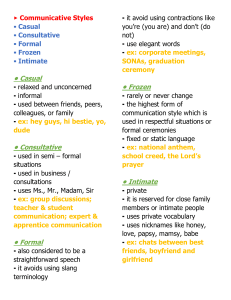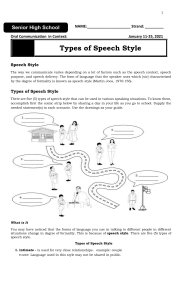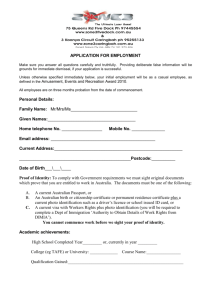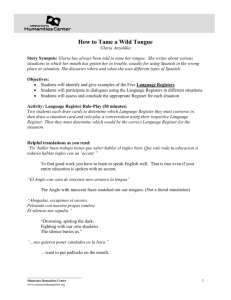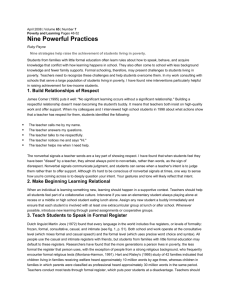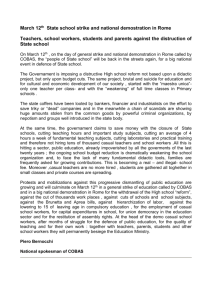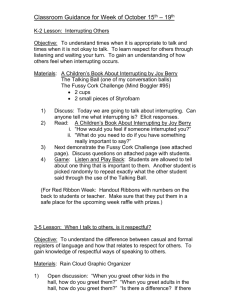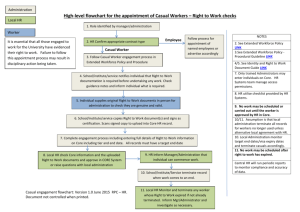Language Registers: Formality Levels & Discourse Patterns
advertisement
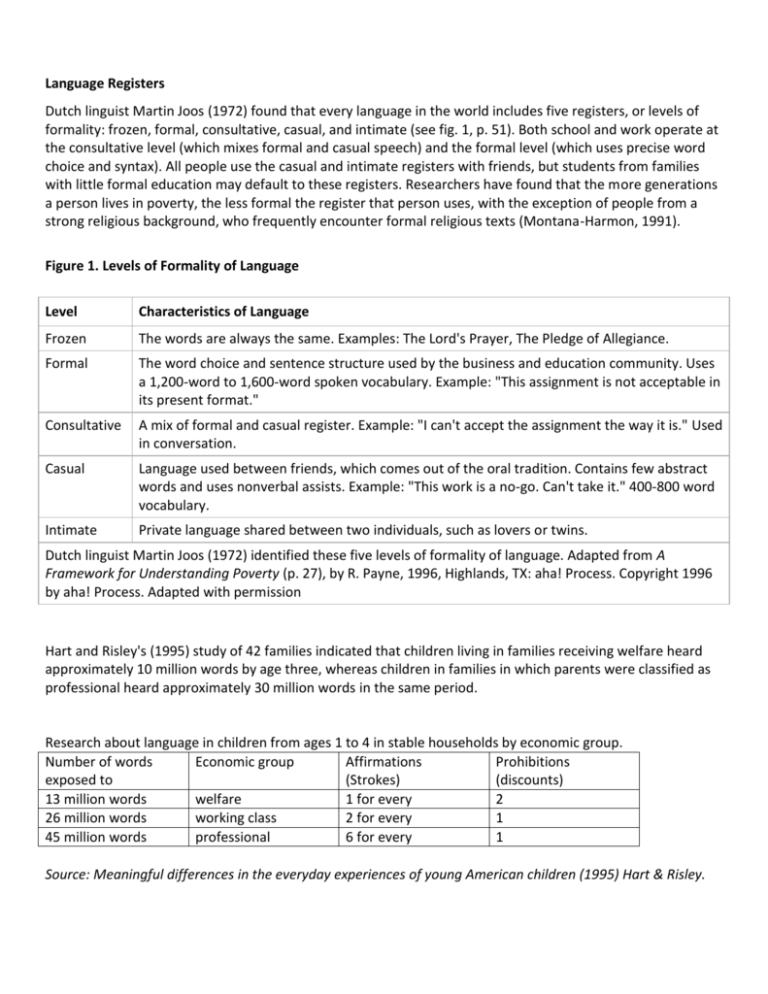
Language Registers Dutch linguist Martin Joos (1972) found that every language in the world includes five registers, or levels of formality: frozen, formal, consultative, casual, and intimate (see fig. 1, p. 51). Both school and work operate at the consultative level (which mixes formal and casual speech) and the formal level (which uses precise word choice and syntax). All people use the casual and intimate registers with friends, but students from families with little formal education may default to these registers. Researchers have found that the more generations a person lives in poverty, the less formal the register that person uses, with the exception of people from a strong religious background, who frequently encounter formal religious texts (Montana-Harmon, 1991). Figure 1. Levels of Formality of Language Level Characteristics of Language Frozen The words are always the same. Examples: The Lord's Prayer, The Pledge of Allegiance. Formal The word choice and sentence structure used by the business and education community. Uses a 1,200-word to 1,600-word spoken vocabulary. Example: "This assignment is not acceptable in its present format." Consultative A mix of formal and casual register. Example: "I can't accept the assignment the way it is." Used in conversation. Casual Language used between friends, which comes out of the oral tradition. Contains few abstract words and uses nonverbal assists. Example: "This work is a no-go. Can't take it." 400-800 word vocabulary. Intimate Private language shared between two individuals, such as lovers or twins. Dutch linguist Martin Joos (1972) identified these five levels of formality of language. Adapted from A Framework for Understanding Poverty (p. 27), by R. Payne, 1996, Highlands, TX: aha! Process. Copyright 1996 by aha! Process. Adapted with permission Hart and Risley's (1995) study of 42 families indicated that children living in families receiving welfare heard approximately 10 million words by age three, whereas children in families in which parents were classified as professional heard approximately 30 million words in the same period. Research about language in children from ages 1 to 4 in stable households by economic group. Number of words Economic group Affirmations Prohibitions exposed to (Strokes) (discounts) 13 million words welfare 1 for every 2 26 million words working class 2 for every 1 45 million words professional 6 for every 1 Source: Meaningful differences in the everyday experiences of young American children (1995) Hart & Risley. Teachers conduct most tests through formal register, which puts poor students at a disadvantage. Teachers should address this issue openly and help students learn to communicate through consultative and formal registers. Have students practice translating phrases from casual into formal register. For example, a student was sent to the office because he had told his teacher that something "sucked." When asked to translate that phrase into formal register, he said, "There is no longer joy in this activity." Teachers should use consultative language (a mix of formal and casual) to build relationships and use formal register to teach content, providing additional explanation in consultative register. Discourse Patterns Formal register discourse pattern When the speaker or writer gets straight to the point when telling a story or making a point. Casual register discourse pattern When the speaker goes around the issue before getting to the point. Story Structure Formal register story structure is when the narrator begins at the beginning of the story and goes to the end in a chronological or accepted narrative pattern. The casual register story structure begins with the end of the story or the part of the story that has the greatest emotional impact. If an individual depends upon a random episodic story structure for memory pattern, lives in an unpredictable environment, and does not have the ability to plan, then….. The individual cannot plan. If an individual cannot plan, he cannot predict. If an individual cannot predict, then he cannot identify cause and effect. If an individual cannot identify cause and effect, he cannot identify consequences. If an individual cannot identify consequences, she cannot control impulsivity. If an individual cannot control impulsivity, she has an inclination to criminal behaviour. Bridges out of poverty: strategies for professionals and communities / Philip E. DeVol, Ruby Payne, Terie Dreussi Smith. Pg. 38
